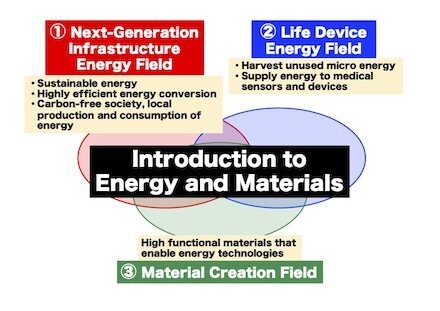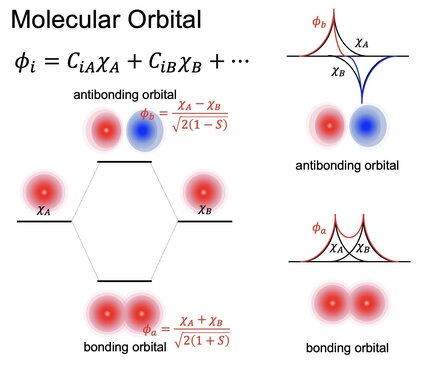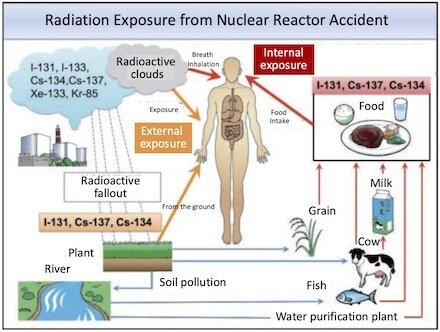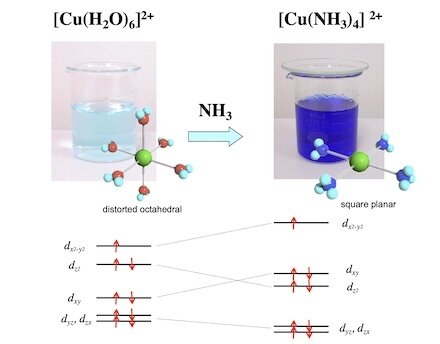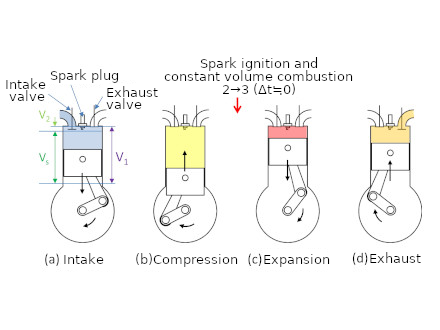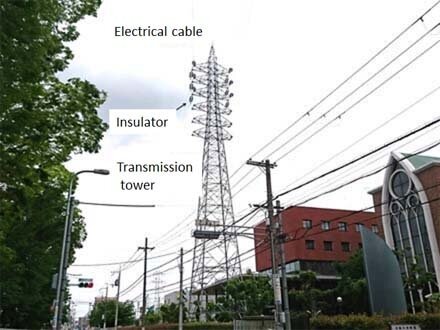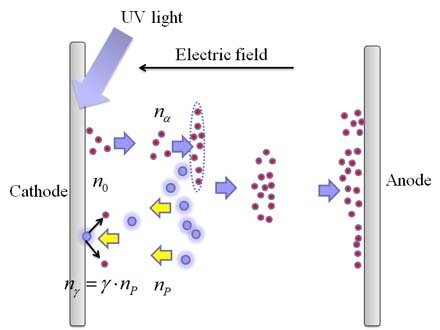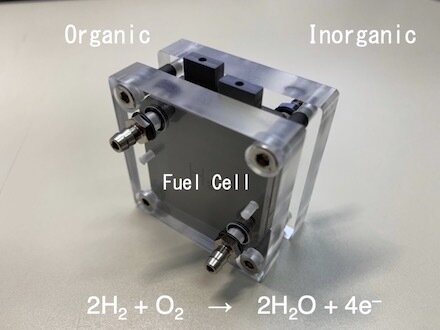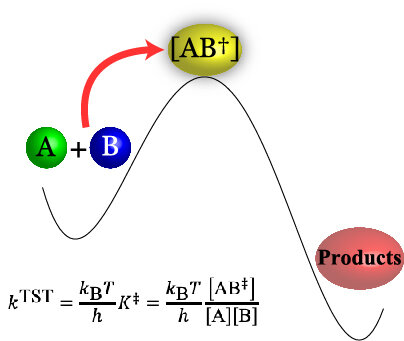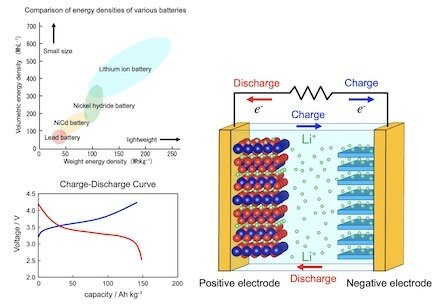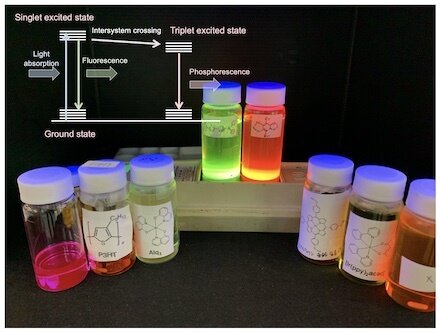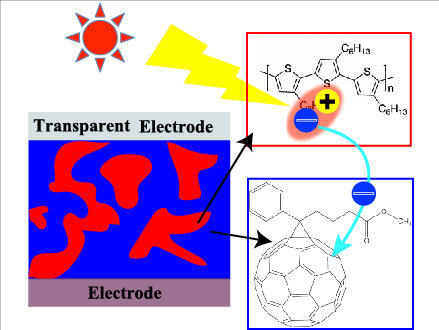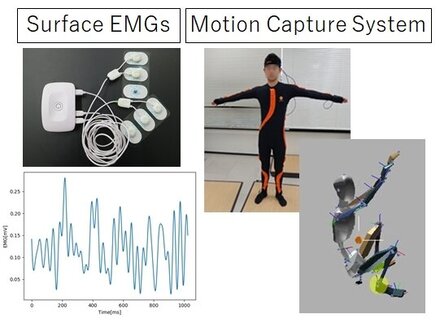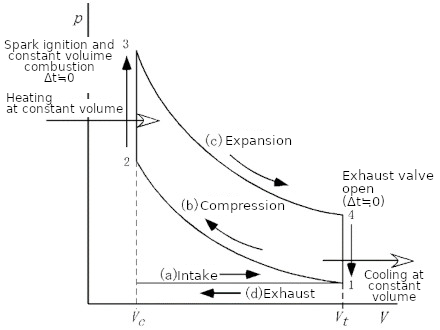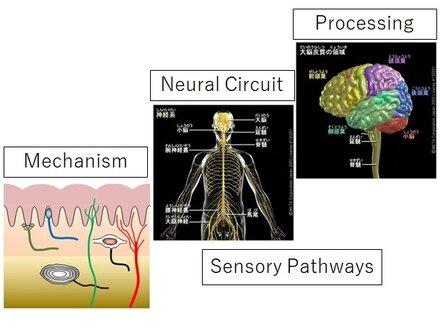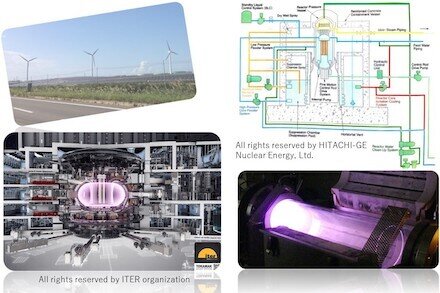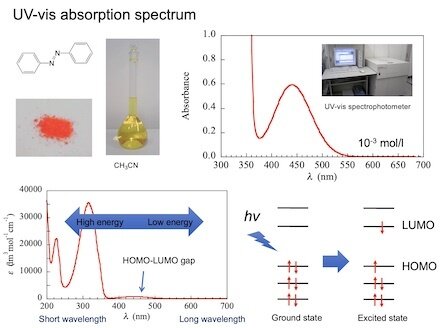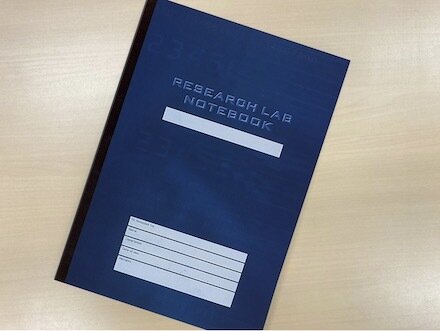Curriculum
Note: Figures in [ ] indicate the number of credits. This curriculum is subject to change.
1st Year
Lectures
Introduction to Energy and Materials
Energy and materials support modern society in many ways. But they also present problems that need to be solved in order to make society sustainable. This class looks at the current state of energy and materials and raises issues related to them. It will stimulate students' interest in the relationship between society and various energy-related technologies and motivate them to learn more.
Omnibus course: Total 15 sessions
1. Hydrogen energy engineering
2. Thermal energy conversion engineering
3. Chemistry related to radioactive materials
4. Strong, lightweight polymers
5. Chemistry related to solar cell materials
6. Nuclear physics
7. High-voltage plasma technology
8. Energy-conversion molecular devices
9. Materials related to hydrogen storage
10. Principles of photoelectric conversion devices
11. Principles and applications of electron transfer
12. Biodevice engineering
13. Mechanobiology
14. Biosensing technology
15. Simulations of material functions
Introduction to Physics for Energy and Materials

By learning about the various types of energy, and their engineering basics, that support modern society, students will acquire a foundation for understanding subsequent subjects on energy engineering.
Omnibus course: Total 15 sessions
1-5: Introduction to renewable energy (What is renewable energy, biomass energy, hydrogen energy, energy conversion and environmental protection)
6-10: Electric energy engineering (Mechanisms of storage batteries, mechanisms of power generation and transmission)
11-15: Basic mechatronics (Use of energy in mechanical engineering and electric and electronic engineering)
Introduction to Chemistry for Energy and Materials
Students will learn the basics of chemistry needed to master energy and materials science. The class covers atoms--the building blocks of all matter--and their bonds, and the origins and properties of various matter. This will provide students with a foundation for understanding subsequent subjects in materials chemistry.
Exercises
Exercises for Mathematics in Chemistry

Students will conduct exercises that give them basic knowledge in probability and statistics, including random events, error, significant figures, and other aspects needed for writing reports on chemistry experiments. Students will also acquire basic skills in mathematics for chemistry by practicing mathematical operations using exponents and logarithms, learning how to use trigonometric functions, and studying integro-differential equations, all of which are necessary for physics and chemistry subjects like quantum chemistry and chemical thermodynamics.
Exercises for Mathematics in Physics

Students learn the basics of linear algebra and differential and integral calculus, and do exercises that simulate real-life problems. The aim is to understand the principles in physics experiments and to gain mathematical skills needed to analyse experimental data. Students will also learn the basics of complex numbers, which are necessary for studying circuitry and quantum mechanics. They will work on solving problems that allow them to understand the usefulness of complex numbers.
Experiments
Experiments in Fundamental Physics

The laws of physics are the foundation for understanding energy use and transformations of matter. In addition to learning theories, it is essential to acquire practical knowledge through experiments. In this class, students work on subjects that promote their understanding of mechanics, thermology, optics, and electromagnetics. They learn how to safely conduct experiments by measuring the unique physical quantities of each subject. They also conduct experiments related to energy issues, such as solar, wind, and nuclear power generation (using Kindai's research reactor). Through these experiments, students deepen their knowledge of the principles of physics and further their understanding of energy in general.
Experiments in Fundamental Chemistry

In all energy-related fields, it is essential to understand the chemical properties of materials and, based on this understanding, have the practical skills to properly handle these materials. In this class, students will get used to basic chemistry experiment procedures by handling familiar subjects, and in the process learn the basics of chemistry. The focus is on metal complexes, chemical batteries, chemiluminescence, and other chemistry topics that form the basis of energy-related technologies. Students also learn the safe handling of chemicals and the proper disposal of experiment waste.
Experiments in Chemistry for Energy and Materials

In this class, students learn the behaviour of chemicals and their proper handling through three main experiments: 1. Qualitative inorganic analyses, which seek to separate metal cations using differences in solubility; 2. Acid-base titration, chelatometry, and other quantitative analysis methods; and 3. Organic chemistry experiments such as qualitative organic analyses and organic synthesis. These experiments will foster in students an attitude of pursuing the principles behind various phenomena. They will learn how to logically present their experiment processes, results, and observations in oral and written form. They will also acquire information literacy, which is needed to analyse data and write reports and explanatory materials.
2nd Year
Lectures
Introduction to Future Energy Infrastructure

Students acquire knowledge of next-generation infrastructure energy technologies, which are indispensable to establishing a sustainable society, and the materials behind such technologies.
Omnibus course: Total 15 sessions
1-5: Basics of hydropower, thermal power, nuclear power, alternative energy (such as solar, wind, and fuel cells), and power transformation and distribution.
6-10: Materials that make up electronic devices, automobiles, aircraft, and power reactors.
11-15: Energy sources, the electricity situation in Japan, and energy environmental issues.
Fundamentals of Energy Physics

Students learn physics, which is key to studying energy-related technologies. The focus is on nuclei, atoms, and the radiation energy released by the atoms. They also study electromagnetics.
Fundamentals of Environmental Energy Science
Studying bioscience as a way to protect yourself in a radiological environment is key to understanding the relationship between society and nuclear energy. This class features the following.
Omnibus course: Total 15 sessions
1-8: Radiation measurement basics; environmental behaviour of radioactive materials in the atmosphere, hydrosphere, and lithosphere.
9-15: Basic principles and structure of nuclear reactors, interaction between radiation and materials; radiation dose and how it affects the human body, medical applications of radiation.
Chemistry of Energy and Materials 1

To understand next-generation energy conversion elements, you need to first understand the structure and electronic states of atoms and molecules, which make up all matter. In this class, students learn why atoms gather to form molecules and why these molecules show different characteristics. Specifically, they study thermodynamic concepts in relation to chemical reactions, stereochemistry and reactivity of simple organic molecules, and various chemical bonds and molecular interactions.
Chemistry of Energy and Materials 2
Students acquire the basic knowledge for developing novel materials that enable energy technologies. These include the structure and reactivity of matter and the evaluation methods for identifying matter (analytical chemistry). Specifically, they study the principles and actual usage of main instrumental analysis methods (NMR, IR, etc.), reactivity of organic matter that has various functional groups, and crystal field theory and ligand field theory, which are key to understanding the electronic states of metal complexes and metal oxides.
Quantum Chemistry

The sub-microscopic world of atoms and molecules is governed by quantum mechanics. To fundamentally understand the properties and chemical reactions of substances, you need to understand quantum chemistry. In this class, students first study the basics of quantum chemistry, such as the Schrödinger equation, which describes the motion of electrons, and the handling of hydrogen atoms. They then go on to study the handling of many-electron atoms in quantum chemistry, and the application of quantum chemistry to molecules, such as molecular orbitals, hybrid orbitals, and reactivity.
Life Device Energy Physics

In developing highly functional devices, you need to have basic knowledge of circuitry. You also need to understand and be able to explain the principles of mechanical strength/endurance and the transfer of heat and mass within devices. In this class, students learn how to apply physics in order to understand these fundamentals.
Omnibus course: Total 15 sessions
1-8: Physics basics such as material mechanics, fluid mechanics, thermodynamics, mechanical dynamics, and control engineering.
9-15: Physics basics such as the flow of electric currents and the relationship between current and voltage; basics of circuitry that use semiconductors like diodes and transistors.
Fundamentals of Electronic Device

This class teaches students electronics basics and aims to deepen their understanding of solid-state physics, which forms the foundation for understanding applied technologies. Because many electronics materials are solid-state devices, students will learn about solids--their basic physical, electrical, magnetic, and optical properties--in the first half of the course. In the second half, they will learn about the mechanism of sensors used to measure physical quantity, as a basis for electrical measurements. They will also acquire signal processing techniques for handling measurement data.
Fundamentals of Biophysics

The activity of living organisms is enabled by various types of energy conversion. Examples include the harvesting of light energy and the drive of nano-size biomolecular motors. Energy conversions and the self-assembly of biomolecules are governed by thermodynamics. This class gives students a deeper understanding of physics by taking various biological activities and linking them to thermodynamics, electromagnetics, and mechanics.
Omnibus course: Total 15 sessions
1-5: Thermodynamics in living organisms' energy conversion.
6-10: Thermodynamics in living organisms' self-assembly.
11-15: Electromagnetics and mechanics in living organisms' energy conversion.
Exercises/Seminars
Exercises for Mathematical Analysis

Research into energy technologies and materials development requires the use of special functions and complex functions. In this class, students acquire the basics of these functions and learn how to apply them appropriately. They will also study statistics and their usage in order to master mathematical techniques and thus handle the large amounts of data obtained from experiments.
Fundamentals of Chemical Information Processing

The effective use of easily understood diagrams and tables is key to writing reports and theses. In this class, students will learn how to effectively use Word, Excel, and other applications in creating presentation materials and reports. As part of their training in AI for chemical substance design, students will also become familiar with the ChemDraw molecule editor and basic Python programming.
Fundamentals of Mathematical Information Processing

Students will deepen their knowledge of Python, which they learned in Fundamentals of Chemical Information Processing, by applying it to what they learned in Exercises for Mathematics in Physics and Exercises for Mathematical Analysis; for example, they will do assays of differences in means and simple statistical processes like regression analysis. Students will also do similar exercises using MATLAB, a software used for numerical analysis, to gain a visual understanding of MATLAB.
Seminar on Energy and Materials 1

This class follows up on Basic Seminars 1 and 2 of the first year, and is similarly conducted in small groups. Students reflect on what they have learned so far and decide on a theme to do research, discussions, project-based learning (PBL) experiments, presentations, and reports. Students will deepen their understanding as multiple instructors provide them with knowledge based on their diverse expertise and perspectives. In this way, students will learn to respect different opinions and respond flexibly. In addition, this class gives students the opportunity to think about their career paths by making them more aware of their areas of interest.
Seminar on Energy and Materials 2

Following up on the Seminar on Energy and Materials 1, students reflect on what they have learned so far and decide on a theme for small-group research, discussions, and project-based learning (PBL) experiments. They also learn how to make effective presentations and write clear and concise reports. As with the Seminar on Energy and Materials 1, multiple instructors provide students with knowledge based on their diverse expertise and perspectives. In this way, students will learn to respect different opinions and respond flexibly. In addition, this class gives students the opportunity to think about their career paths by making them more aware of their areas of interest.
Experiments
Experiments in Physics for Energy and Materials 1

In this class, students cultivate the basic skills needed to understand energy conversion and control, and to develop various devices, through three main physics experiments: 1. Structure of materials and methods for evaluating physical properties; 2. Photoelectric conversion; and 3. Solid-state physics. In some experiments, they will use Kindai's research reactor and the facilities of Kindai's Joint Research Centre to do experiments on electrons, photons, X-rays, and the interactions between ions/neutrons and matter. By creating reports on the experiments, students will learn how to logically present their experiment processes, results, and observations in oral and written form. They will also acquire information literacy, which is needed to analyse data and write reports and explanatory materials.
Experiments in Physics for Energy and Materials 2
In this class, students do experiments on four main topics: 1. Basic power sources like engines and motors; 2. Conversion of motion into rotation and vibration; 3. Motion of fluids; and 4. Electromagnetism. In 4., they study basic circuitry and the roles and combinations of the components that make up circuits, as well as get hands-on experience in circuit design, assembly, and physics instrumentation and control. Through these experiments, students cultivate the basic skills needed to design and develop mechanisms for efficiently converting and utilising energy. In addition, students will learn how to logically present their experiment processes, results, and observations in oral and written form. They will also acquire information literacy, which is needed to analyse data and write reports and explanatory materials.
3rd Year
Lectures
Materials Thermodynamics

Students study thermodynamics, which is key to understanding the properties of matter and materials and the compounding of various substances.
Omnibus course: Total 15 sessions
1-7: Equilibria, such as chemical equilibrium and phase equilibrium in thermodynamics, which are important for evaluating the behaviour of matter.
8-15: "Histology" of metal materials, i.e., the concept of alloys, and binary and ternary alloy phase diagrams; alloys (metallic substances composed of multiple elements), basics of iron and steel materials, and how to improve these materials' properties.
Quantum Physics and Engineering

Radiation is used not only in medicine but also in various other industries. Radiation measurement techniques are indispensable to the proper management and safe use of radiation, which is invisible to the human eye. This lecture gives students basic knowledge of radiation physics and teaches them how to measure and use radiation. The class covers the subjects of physics, practice, and laws and regulations, which are included in the qualification exam for radiation protection supervisor.
Omnibus course: Total 15 sessions
1-7: Mechanism behind the generation of radiation, physics concerning the interaction between radiation and matter, principles of measurement.
8-15: Various radiation application technologies, management techniques and laws and regulations pertaining to the safe use of radiation.
Electric Energy Generation and Transport
Alternating current (AC) is the main type of electric current used in the transmission of electrical energy. In this lecture, students first learn the basics of AC circuits. Based on this, they will go on to understand the structures and mechanisms of power transmission/distribution lines, substations, and other things that make up a power system, and study the electrical properties of each constituent. They will also study in detail about the different types of renewable energy, which are crucial to creating a sustainable society.
Nuclear Energy Physics and Engineering

This lecture gives students comprehensive knowledge of nuclear power technology.
Omnibus course: Total 15 sessions
1-5: Students learn the basics of nuclear reactors through reactor physics and reactor engineering, and understand the unique features of different reactors, such as thermal-neutron reactors and fast reactors. They study reactors in the context of heat and the interaction between neutrons and nuclei.
6-10: Students learn about the nuclear fuel cycle, which comprises front-end steps (preparation of nuclear fuel) to back-end steps (safe removal, storage, reprocessing, and reuse of spent nuclear fuel).
11-15: Students gain knowledge of the disposal of highly radioactive waste (back-end step) generated in reprocessing.
Hydrogen Energy Engineering

Hydrogen is gathering a great deal of attention these days as a source of clean energy because it can be made from water, a limitless resource. In this class, students learn about hydrogen in the energy field--its production, storage, transportation, and how to obtain heat, power, and electricity from it. Students will deepen their understanding of hydrogen energy and other energy, and develop their grounding to become future energy researchers and engineers.
Nuclear Physics

The energy present in atomic nuclei is enormous, as exemplified by nuclear power. Students learn the fundamentals of utilising this energy through topics like nucleus structure theory and reaction theory, and also study macroscopic and microscopic models. They also study the behaviour of nuclei in uranium and transuranium elements, which are the core of nuclear energy.
Infrastructure Materials Engineering

Without materials (matter, substances), we would not be able to make things. In order to ensure the long life and safe operation of electricity generators, we need to choose the materials that are suitable for the application and environment. This lecture aims to deepen students' understanding of materials' various properties: thermal (temperature), mechanical (strength), electrical (conductivity), and chemical (resistance to oxidation, affinity to hydrogen). Students will learn to select the right material for the right job in the diverse energy industry.
High-Voltage Plasma Physics and Engineering
High-voltage plasma engineering holds a key position in effective power transmission and distribution. With the evolution of high voltage and high magnetic field technologies, the insulating performance of materials becomes ever more important. That is why it is essential to understand basic discharge mechanisms and the behaviour of plasma. This class teaches students gas discharge inception theory and plasma behaviour.
Radiochemistry

This class prepares students for the radiation protection supervisor (first class) qualification exam. They will study the properties of radioactive elements like actinides, how to separate them (deposition, extraction, adsorption, etc.) when handling them in an unsealed state, and methods for analysing them (ICP-OES, ICP-MS, etc.). Students will also learn about the interaction between organic compounds and radiation, which is inevitable when handling radioactive materials. They will also actively study the world's current status of this field.
Chemistry of Functional Materials
We are surrounded by organic materials and inorganic materials like metals, alloys, and ceramics. In energy conversion and storage devices as well, various organic and inorganic materials are used. In this lecture, students learn about materials--both organic and inorganic--used in fuel cells and lithium ion batteries.
Omnibus course: Total 15 sessions
1-7: Students use their basic knowledge of organic chemistry to study organic materials that make up energy conversion and storage devices, and their properties and functions.
8-15: Students first study the basics of material composition, such as solids' crystal structures, lattice defects in crystals, and binary phase diagrams. They then take examples of inorganic compounds used in real life to study their structures, electronic states, and applications.
Biomaterials Chemistry

All living organisms utilise the chemical reactions of various substances to capture and use energy. In this lecture, students first study the bonding, steric structures, and electronic states of organic materials found around us. They then study the structures and roles of biological substances such as natural organic compounds, sugars, lipids, amino acids, and proteins.
Omnibus course: Total 15 sessions
1-7: Bonding, steric structures, and electronic states of organic compounds.
8-15: Various organic materials that play a role in the structures and functions of living organisms.
Chemistry of Molecular Reactions
Students learn the basics of statistical thermodynamics and chemical kinetics, which are the foundation for understanding chemical reactions. In the first half of the course, students first do reviews of thermodynamics. They then study statistical thermodynamics basics, such as molecular kinetics, classical statistical mechanics for thermal equilibrium, and quantum statistical mechanics for thermal equilibrium. In the second half, they will study reaction rates and rate equations, reaction rate analysis methods, and how to handle reactions on solid surfaces or in liquid solutions according to chemical kinetics.
Molecular Functional Chemistry
In this class, students study the basics of functional chemistry, such as optical functions and electrochemical properties, as they pertain to molecular materials. In the first half of the course, they study electrochemistry basics and the application of electrochemistry to rechargeable batteries. In the second half, they study photochemistry basics, including what light is, how the electronic states of molecules change when they absorb light, and the relationship between molecular structures and colour.
Polymer Materials Engineering

Polymers are used widely as the material for plastics and fibres. Just like inorganic materials such as metals and ceramics, polymers are indispensable to today's society. This lecture teaches students methods for synthesising polymers and the correlation between molecular structures and various properties. This gives students the grounding needed in developing polymer materials that will support future energy infrastructure.
Computational Biomolecular Chemistry

Interactions between large biological molecules like proteins are the basis of life activities. Disruptions in these interactions can lead to diseases. This lecture introduces students to various tools used in informatics and examples of their usage. Students also learn about the interactions and molecular design of drug molecules, which work by inhibiting interaction between biomolecules. They also study computational chemistry techniques used to understand interactions and molecular design.
Optoelectronic Functional Chemistry
In order to boost the efficiency of optoelectronic devices like organic solar cells and organic electroluminescent diodes (OLED), you need to understand the interaction between materials and light when designing these devices. In this lecture, students first deepen their understanding of molecular orbitals. They then study optical absorption and energy transfer in materials using Jablonski diagrams. And after studying energy band theory and electrical conductivity, which are key in understanding the electronic states of solids, students learn about the operational mechanisms of organic solar cells and OLED.
Quantum Molecular Engineering
Rechargeable lithium ion batteries are electricity storage devices used in many applications, from smartphones and laptops to electric vehicles. For humankind to achieve a low-carbon society, we need to develop long-life energy storage devices that can retain even larger amounts of electricity. In this class, students first learn about interfacial chemistry and electrochemistry, which are key to understanding current energy storage devices. They then study the operational mechanisms of the latest energy storage devices.
Molecular Devices Engineering

We are surrounded by various molecular devices, and new devices are being developed every day. This lecture deepens students' understanding of the form and functions of molecules and teaches them the basics of molecular device design. Students study the mechanical, physical, electrical, magnetic, and optical functions of state-of-the-art molecular devices, and they will acquire the ability to explain at the molecular level the mechanisms behind these functions.
Electronic Device Physics

This lecture aims to deepen students' understanding of the physical properties of semiconductor materials, which are the key elements of electronic devices, and their applications. Students learn about the structures and electromagnetism behind semiconductor-based energy conversion technologies, and master the operating principles of transistors, light-emitting devices, light-receiving devices, and thermoelectric conversion devices.
Introduction to Biological Sensors
Sensing related to living organisms is extremely diverse, ranging from macro-level mechatronics and robotics in people's daily lives to micro-level in vivo molecular recognition. In this lecture, students get an overview of these various sensing technologies and acquire the basic knowledge needed for the development and application of sensors.
Introduction to Biomechanics

In order to develop new biological devices based on never-before-seen mechanisms, you need to understand how living things capture, convert, and use energy. In this class, students learn and understand various mechanical, electrical, and chemical in vivo phenomena, such as the movement of microorganisms and muscle tissue.
Heat Engine Physics
Today's mainstream energy supply comes from the conversion of thermal energy into power via heat engines. Raising conversion efficiency by improving heat engine technology is important as a solution to the world's energy problems. This class introduces students to the structure and mechanisms of practical heat engines. They also study the history of heat engine improvements, thermal physics engineering theory and how it works in actual operation, and improvement measures.
Photoelectric Device Engineering

Sunlight is extremely important as a renewable energy source. Effective use is made of sunlight through the technology of photoelectric conversion. In deepening their understanding of photoelectric conversion in this class, students study the properties of sunlight, interaction between light and matter, the principles of photoelectric conversion, the limits of energy conversion efficiency, and photoelectric device technology.
Bioinformatics Engineering
This class gives students an understanding of how humans receive and perceive various physical stimuli (such as light, sound, force, smell, and taste) from the real world. They learn about the characteristics of human sensory receptors and the perceptual properties of how the brain processes this information. They also learn about the information processing functions of humans by comparing them with actual sensors.
Biological Device Engineering

Biological devices (bioelectronic devices) fuse nanotechnology cultivated in electronic devices, mainly inorganic semiconductors, with biotechnology and medicine. These devices can sense information emitted from living organisms as well as control their functions. In this class, students learn about biological devices and their manufacturing processes.
Biomechanical Engineering

The cells that make up living organisms show various behaviour in response to the external environment and stimuli from outside. The behaviour of these cells governs the functions of tissue. This field of study is called mechanobiology. In this class, students learn about mechanobiology by looking at actual tissue like muscles and the nervous system, which will lead to the design of future energy devices.
Energy Conversion Engineering

This lecture explains the theory and practical technology of the conversion of chemical energy into thermal energy, mainly by fuel combustion. It also explains the concept of exergy, which is useful in evaluating energy conversion systems. Students learn about the evaluation and optimisation methods for various energy systems, such as combined cycle and cogeneration systems.
Experiments/Exercises
Practice of Informatics

Fortran is a programming language used widely today for scientific computation. By using Fortran to write simulation programs, students will shape the mathematical knowledge they have acquired so far into actual programs. Students will also use Python for machine learning and image recognition in order to gain AI knowledge necessary for the future and to practice programming. By acquiring these skills, students gain programming abilities that they can utilise after being assigned to a laboratory.
Omnibus course: Total 15 sessions
1-5: Write simulation programs using Fortran.
6-10: Training in machine learning using Python.
11-15: Training in image recognition using Python.
Experiments in Biology for Energy and Materials

This course covers 1. cell biology experiments, 2. functions, synthesis, and separation analysis of biological organic materials, and 3. molecular biology experiments on DNA. Through these experiments, students learn to observe and understand life phenomena, understand the correlation between structures and functions of biological materials, and acquire the latest skills in biology experiments. These will form the foundation needed in developing biological devices.
Exercises for Energy Engineering
These exercises facilitate the smooth acquisition of specialised subjects in the Next-Generation Infrastructure Energy field.
Omnibus course: Total 15 sessions
1-7: Students study the nuclear fuel cycle, waste treatment technology, post-accident procedures, and decommissioning of nuclear power plants. They learn about the current status and future prospects of innovative next-generation reactor technology. They also look at the cutting edge of research related to the discovery of new elements in nuclear physics.
8-15: Students learn about the utilisation of hydrogen as a next-generation energy source and the medical and industrial applications of high-energy plasma.
Seminars
Seminar on Energy and Materials 3

Students learn about the cutting edge of research in energy and materials through instructors' explanations on their current research, the history and future of related fields, how the research relates to society, and its future prospects. Students will also be exposed to the scientific and technical English related to each field and be given the opportunity to expand on their basic English writing skills through small-group dialogue. These will boost each student's motivation to study specialised subjects and make them more aware of their future career paths.
Seminar on Energy and Materials 4

In this class, students learn about the background and significance of research under their supervising instructor during their temporary assignment to a laboratory. Students will appropriately gather literature, study trends in Japan and overseas regarding their suggested research theme, and deepen their understanding of that research theme's positioning in society and its ripple effects across society. They will dive deeply into English-language literature and develop their reading comprehension of scientific and technical English. They also learn about ethics in scientific research, such as the handling of data and methods of expression. Through these, students prepare for the smooth launch and progress of their bachelor thesis.
Seminar for Bachelor Thesis

In this class, students conduct research as they would on their bachelor thesis on a theme they select from among the proven research topics of each laboratory. They do this during their temporary assignment to the laboratory and under their supervising instructor. Students learn the practical skills to do research for their bachelor thesis, such as techniques and principles for doing experiments, the principles and usage of measurement and analytical equipment, and methods for data analysis. These prepare students to smoothly carry out work on their bachelor thesis.
Exercises (Elective Subjects)
Exercises for Instrumental Analysis
In this class, students practice instrumental analysis, which is necessary for the smooth acquisition of specialised subjects in the Material Creation field. Specifically, students study the principles of NMR (nuclear magnetic resonance), IR (infrared) spectroscopy, UV-Vis (ultraviolet-visible) spectroscopy, and MS (mass spectrometry), and do exercises in spectrum analysis. They gain basic knowledge regarding structure elucidation of organic molecules and acquire the skills to determine the structure of unknown organic compounds.
Exercises for Instrumentation Physics

These exercises facilitate the smooth acquisition of specialised subjects, which are based on physics and biology, in the Life Device Energy field.
Omnibus course: Total 15 sessions
1-7: Training in basic evaluation methods for mechanical operation, strength, and heat and mass transfer, which are necessary for the implementation of biomechanics, machine control, and measurement devices.
8-15: Training in applying the mathematical and physical knowledge acquired so far to the design, manufacture, measurement, and control of electronic devices.
4th Year
Individual Study for Bachelor Thesis
Students will take a theme given by their main instructor and, using the specialised knowledge and experiment techniques they have acquired in their studies, conduct proactive, ongoing research towards solving a problem or achieving a result. They will have regular opportunities to hold discussions with their instructors and practice giving oral and written explanations of their research plans and methods, their results to date, and their observations on these. Through this they will acquire the power to present logical oral and written explanations. Furthermore, students will be creating reports and presentation materials through which they will continuously improve their information processing techniques, such as analysing the data they have gathered and putting it into clear graphical form. The culmination will be students' final presentations and the submission of their thesis.
Lectures (Elective Subjects)
Engineering of Bioenergy

The world's environment is under increasing threat, as shown by debate at the UN Climate Change Conference and other international meetings. Particularly dire are the problems of energy source depletion and global pollution. This class will teach students the basics of thermodynamics and about energy issues and environmental pollution caused by fossil fuels. It will also cover sustainable, renewable energy, in particular bioenergy that uses biomass as the primary energy source. Students will learn the basics as well as the latest technologies and systems, such as biocoke. They will also study environmental pollutants caused by energy conversion, the mechanisms behind this, and emission control technologies.
